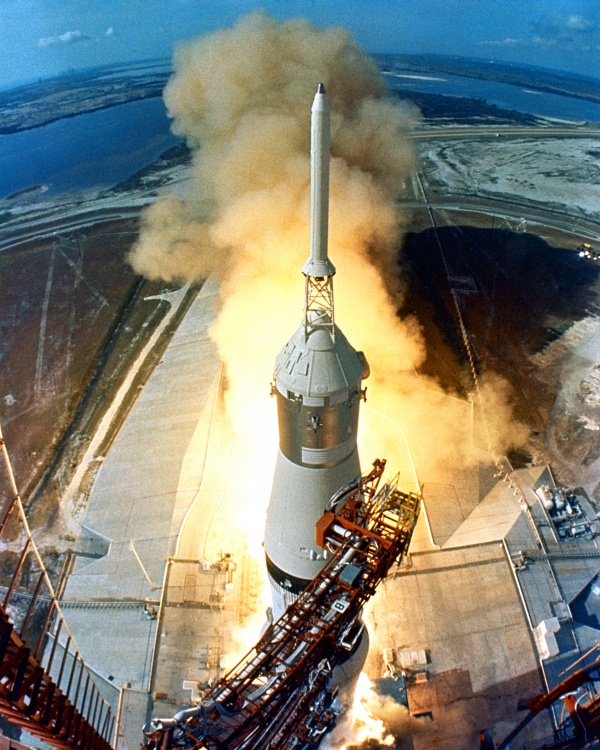Facts About Apollo 11
Apollo 11 was the trailblazing mission that first landed humans on the Moon. Led by Commander Neil Armstrong, with Buzz Aldrin as the lunar module pilot and Michael Collins as the command module pilot, the mission launched on July 16, 1969, and landed on the Moon on July 20, 1969. Armstrong and Aldrin spent 21 hours and 36 minutes on the lunar surface, collecting 47.5 pounds of lunar samples. Armstrong's initial steps on the Moon were accompanied by his iconic words, "That's one small step for man, one giant leap for mankind." Meanwhile, Collins remained in lunar orbit aboard the Command Module Columbia.
This mission was a pivotal part of NASA's Apollo program and launched from Kennedy Space Center using a Saturn V rocket. The spacecraft comprised three key components: the Command Module (CM) Columbia, the Service Module (SM), and the Lunar Module (LM) Eagle. After detaching from the Saturn V rocket's third stage, the crew spent three days traveling to the Moon before entering its orbit. Armstrong and Aldrin then descended to the Moon's surface in the Lunar Module, Eagle.
Apollo 11's successful landing marked the culmination of the Space Race and fulfilled President John F. Kennedy's 1961 pledge to land a man on the Moon and return him safely to Earth by the end of the 1960s. The mission concluded with a splashdown in the Pacific Ocean on July 24, 1969.
The triumph of Apollo 11 showcased U.S. technological prowess and had a profound cultural impact. Phrases like "If they can send a man to the Moon, why can't they...?" became part of everyday conversation. However, it also sparked debate about the cost of space exploration, especially when social and economic issues were prevalent on Earth.
The legacy of Apollo 11 is celebrated through numerous memorabilia and exhibits, such as the Command Module Columbia, which is displayed at the Smithsonian National Air and Space Museum. Lunar samples collected during the mission were distributed as goodwill gifts to various countries. Remarkably, the Lunar Laser Ranging experiment from the mission is still operational today.
Anniversaries of the mission have been marked with special events, documentaries, and commemorative items. The 50th anniversary in 2019 was particularly notable, featuring a projection of the Saturn V rocket on the Washington Monument and a Google Doodle tribute. Films and documentaries like "Apollo 11" (2019) and "Chasing the Moon" (2019) continue to keep the story of this extraordinary mission alive.

 Mexico
Mexico